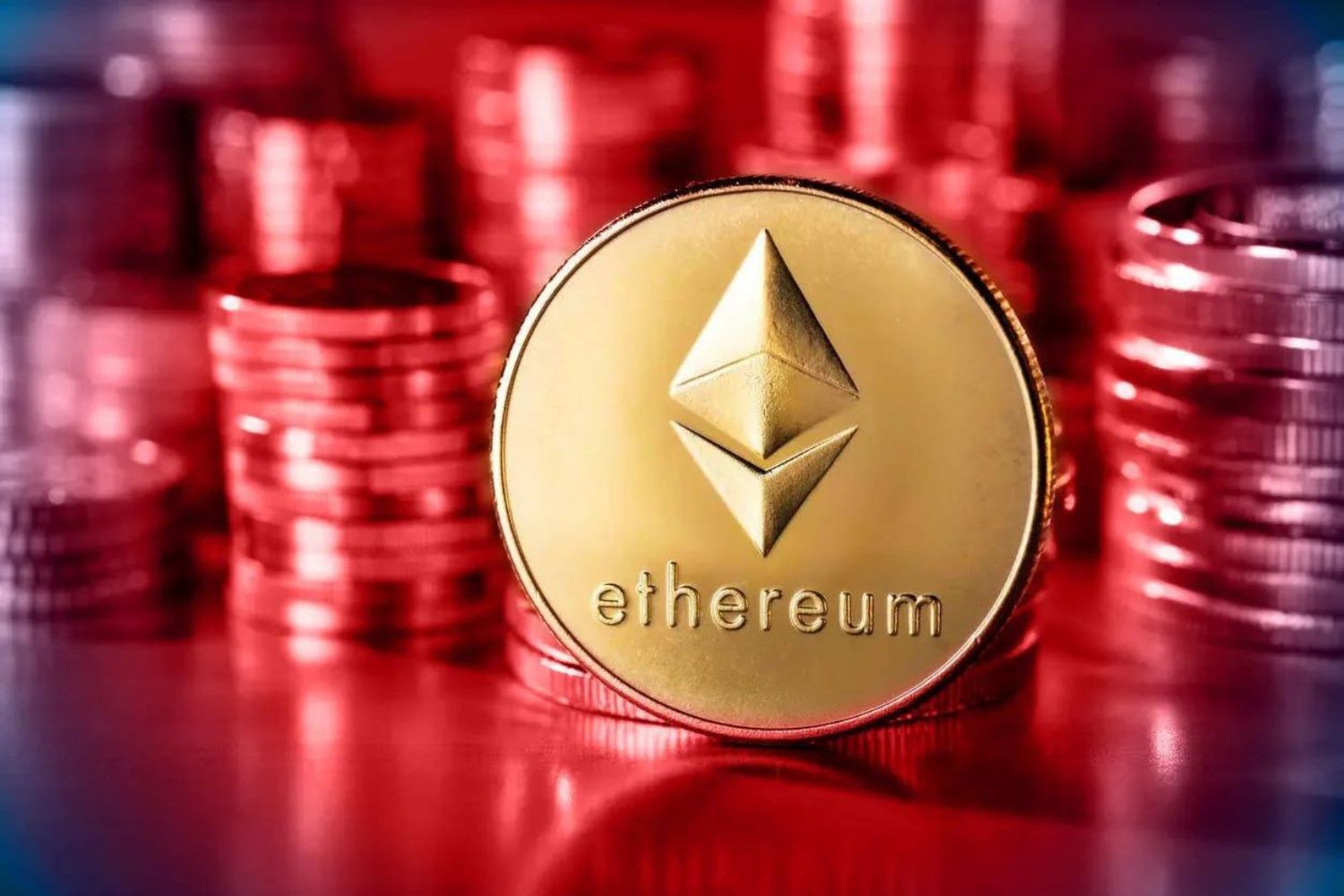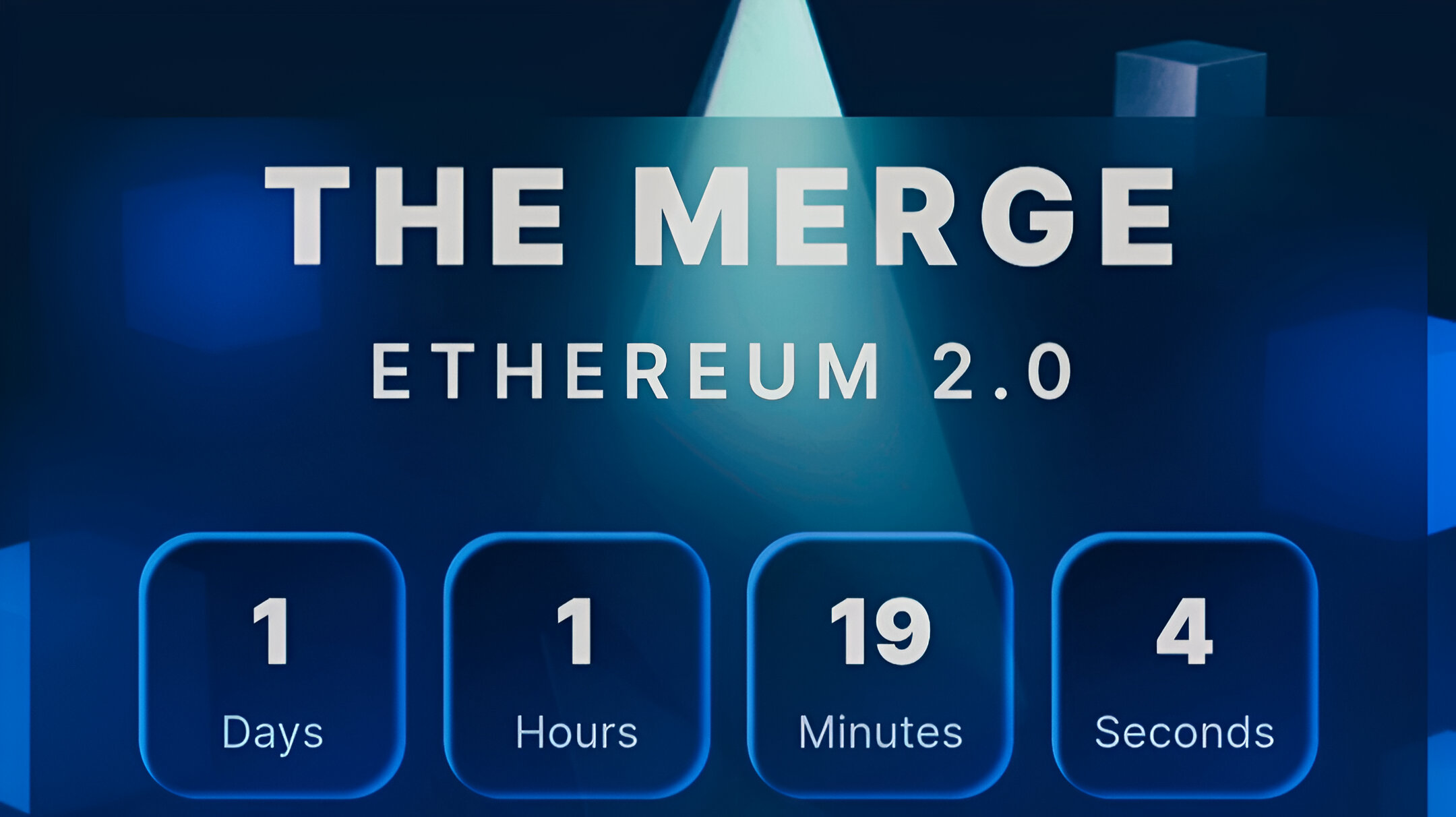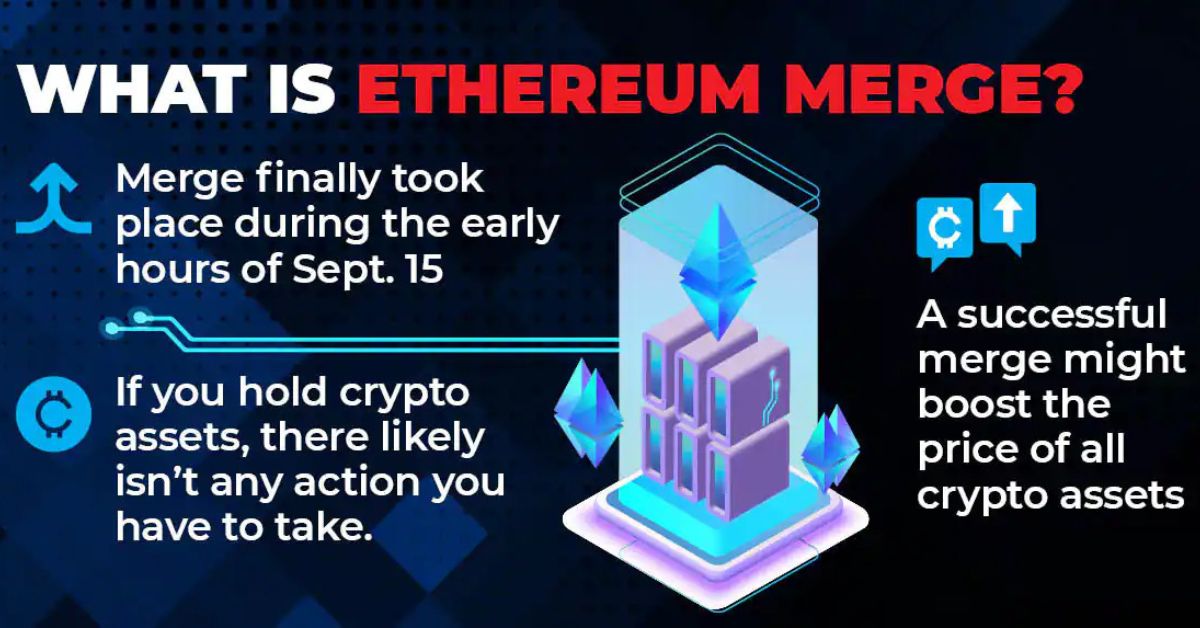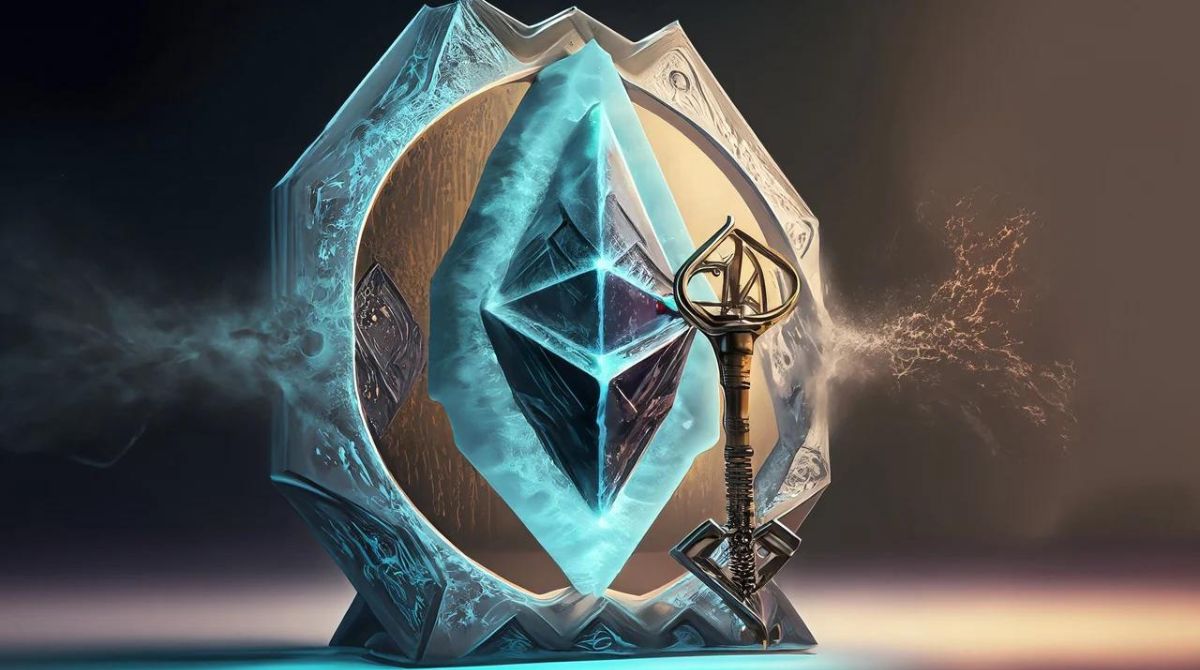Introduction
The world of cryptocurrency is constantly evolving, and Ethereum has emerged as one of the most prominent players in the market. With its decentralized and programmable nature, Ethereum has gained wide recognition and adoption. However, the Ethereum community is eagerly awaiting a significant milestone known as the Ethereum merge. This major upgrade is expected to have a profound impact on the Ethereum network, leading many to wonder how it will affect the price of Ethereum tokens.
The Ethereum merge, also referred to as Ethereum 2.0 or ETH2, aims to replace the current proof-of-work (PoW) consensus mechanism with a more efficient proof-of-stake (PoS) model. This transition seeks to address concerns related to scalability, energy consumption, and security. The merging of the existing Ethereum network with the new PoS system is anticipated to bring about various changes and improvements to the overall functioning of the Ethereum ecosystem.
Given the significance of the Ethereum merge, it is crucial to examine the potential impact it may have on the price of Ethereum tokens. While it is impossible to predict the future with certainty, analyzing the factors at play can provide insights into potential price movements. In this article, we will explore both the positive and negative effects that the Ethereum merge could have on the price of Ethereum tokens.
What is the Ethereum merge?
To understand the impact of the Ethereum merge on the price of Ethereum tokens, it is essential to grasp the concept of the merge itself. The Ethereum merge refers to the process of transitioning from the current proof-of-work (PoW) consensus mechanism to a proof-of-stake (PoS) model.
Currently, Ethereum operates on a PoW system, similar to Bitcoin. This means that miners solve complex mathematical problems to validate transactions and secure the network. However, PoW is resource-intensive, requiring substantial computational power and energy consumption.
The Ethereum merge will introduce a new consensus mechanism called Ethereum 2.0 or ETH2. This upgrade will implement the PoS model, which differs from PoW in several ways. Instead of miners, validators will be responsible for validating transactions and creating new blocks. Validators are chosen based on the number of Ethereum tokens they hold and are willing to “stake” as collateral.
With PoS, the more tokens a validator holds and the longer they are willing to hold them, the higher the chances of being selected to validate transactions and earn rewards. This shift promotes a more energy-efficient and scalable network, as it eliminates the need for extensive computational power. Validators are also incentivized to act honestly, as they would lose their staked tokens if they behave maliciously.
The Ethereum merge aims to improve the network’s speed, security, and sustainability. It is a significant step towards achieving Ethereum’s long-term goals of scalability, enabling a greater number of transactions per second, and reducing transaction fees. Additionally, the merge will enhance the overall user experience by making the Ethereum network more accessible and environmentally friendly.
Overall, the Ethereum merge represents a fundamental shift in how the Ethereum network operates. By transitioning to a PoS consensus mechanism, Ethereum aims to address the limitations of PoW and position itself as a more efficient and scalable blockchain platform. Understanding the significance of this transition is crucial in evaluating how it may impact the price of Ethereum tokens in the future.
How will the Ethereum merge impact price?
The Ethereum merge is anticipated to have a significant impact on the price of Ethereum tokens. However, predicting the precise effect on price is challenging due to the complex interplay of various factors in the cryptocurrency market. While we cannot forecast with certainty, we can explore potential positive and negative effects that the merge may have on the price of Ethereum tokens.
Potential positive effects on price:
- Increased investor confidence: The Ethereum merge represents a major upgrade that addresses scalability and energy efficiency concerns. This could attract more institutional investors and traders who are looking for a secure and sustainable blockchain platform.
- Increased demand for Ethereum: The merge is expected to enhance the network’s capabilities, making it more appealing for developers to build decentralized applications (dApps) and smart contracts. This increased adoption and usage could result in greater demand for Ethereum tokens and potentially drive up the price.
- Reduced supply pressure: With the transition to a PoS model, Ethereum miners will no longer need to compete for mining rewards. This change could potentially reduce the selling pressure from miners, leading to a decrease in the supply of newly minted Ethereum tokens and a potential positive impact on price.
Potential negative effects on price:
- Price volatility: The anticipation and uncertainty surrounding major upgrades like the Ethereum merge can often lead to increased price volatility. Traders and investors may react to news, leading to price fluctuations in the short term.
- Technical challenges: The Ethereum merge is a complex and intricate process that involves various technical aspects. If any unexpected issues or delays arise during the transition, it could lead to temporary decreases in investor confidence and a potential negative impact on price.
- Market sentiment: The overall sentiment in the cryptocurrency market can greatly influence the price of Ethereum tokens. Factors such as regulatory developments, global economic conditions, and investor sentiment towards cryptocurrencies as a whole can affect the price of Ethereum, irrespective of the merge.
While these potential effects provide insight into the potential impact of the Ethereum merge on the price of Ethereum tokens, it’s important to note that the cryptocurrency market is highly unpredictable. Other factors and events, both internal and external to the Ethereum ecosystem, can also influence price movements. Therefore, it is advisable to consider these potential effects along with other market factors when evaluating the price outlook for Ethereum tokens post-merge.
Potential positive effects on price
The Ethereum merge holds the potential to generate several positive effects on the price of Ethereum tokens. While the exact outcome is uncertain, examining these potential effects can provide insights into the optimistic outlook for Ethereum’s price post-merge.
Increased investor confidence:
The successful implementation of the Ethereum merge is likely to boost investor confidence in the Ethereum ecosystem. With the transition to a more efficient and sustainable proof-of-stake (PoS) consensus mechanism, Ethereum will address scalability and energy consumption concerns that have plagued the network. This enhanced confidence can attract more institutional investors and traders, leading to increased demand for Ethereum tokens and a potential upward pressure on price.
Expansion of the network:
The merge has the potential to attract more developers and businesses to the Ethereum network. The improved scalability and reduced transaction fees offered by the new PoS model can incentivize developers to build decentralized applications (dApps) and smart contracts on Ethereum. A growing ecosystem can lead to increased usage and demand for Ethereum tokens, potentially driving up their price.
Reduced selling pressure:
One significant advantage of the Ethereum merge is the elimination of mining rewards. With the transition to PoS, miners will no longer need to sell their newly minted tokens to cover mining expenses. This change can result in a decrease in the selling pressure on Ethereum tokens, as mining rewards will be replaced by staking rewards. With a reduced supply of newly minted tokens hitting the market, the balance between supply and demand may shift in favor of higher prices.
Positive network effects:
As Ethereum strengthens its position as a more efficient and scalable platform, it can attract more developers and users. This positive feedback loop, known as network effects, can contribute to a virtuous cycle of increasing adoption and usage. As more individuals and businesses utilize Ethereum for various purposes, the demand for Ethereum tokens could rise, potentially resulting in a positive impact on price.
Market perception:
The successful implementation of the Ethereum merge can improve the overall perception of Ethereum in the cryptocurrency market. This upgrade signifies the commitment of the Ethereum community to continuously improve the network’s capabilities and address its limitations. A positive market perception of Ethereum’s technical advancements and future potential can lead to increased interest and investment, potentially driving up the price of Ethereum tokens.
While these potential positive effects on price present a promising outlook, it is important to note that the cryptocurrency market is highly volatile and unpredictable. External factors such as regulatory developments, global economic conditions, and shifts in investor sentiment can also influence the price of Ethereum tokens. It is advisable to consider these potential positive effects alongside other market factors when analyzing the potential impact of the Ethereum merge on the price of Ethereum tokens.
Potential negative effects on price
While the Ethereum merge holds promise for positive impacts on the price of Ethereum tokens, it is important to consider potential negative effects that could arise as well. The cryptocurrency market is highly volatile and influenced by various factors, and understanding the potential risks is crucial in evaluating the price outlook post-merge.
Market volatility:
The anticipation and uncertainty surrounding major upgrades like the Ethereum merge can often lead to increased price volatility. Traders and investors may react to news and developments, causing rapid price fluctuations in the short term. Such volatility can create challenges for price stability and impact investor sentiment in the immediate aftermath of the merge.
Technical challenges and delays:
The Ethereum merge is a complex and intricate process, involving the coordination of multiple technical elements. Unexpected technical challenges or delays during the transition can erode investor confidence and potentially lead to temporary price decreases. As with any technological upgrade, there are potential risks of unforeseen issues or setbacks that could cause short-term market turbulence.
Profit-taking by traders and investors:
As the Ethereum merge approaches, some traders and investors might decide to take profits by selling their Ethereum holdings. This profit-taking behavior can exert downward pressure on the price, temporarily offsetting the potential positive impacts of the merge. While this behavior is driven by individual preferences and profit motives, it can create short-term price fluctuations.
Shifting market sentiment:
The overall sentiment in the cryptocurrency market can greatly influence the price of Ethereum tokens. Factors such as regulatory developments, geopolitical events, and shifts in investor sentiment towards cryptocurrencies as a whole can affect the price of Ethereum independent of the merge. Negative sentiment in the broader market can spill over and overshadow the positive effects of the merge, leading to potential price declines.
Competition from other networks:
While Ethereum is the second-largest cryptocurrency by market capitalization, it faces competition from other blockchain networks. Competing networks that offer similar features or benefits may attract developers and users away from Ethereum, potentially impacting the demand for Ethereum tokens and its price. The success and adoption of rival networks can pose a challenge to Ethereum’s market position.
While these potential negative effects on price should be considered, it’s important to note that the cryptocurrency market is highly dynamic and multifaceted. The balance between positive and negative factors can shift quickly, and the ultimate price trajectory will depend on the interplay of various market forces. It is advisable to approach price analysis post-merge with a comprehensive understanding of both the positive and negative factors at play.
Other factors to consider
Aside from the Ethereum merge itself, there are several other factors that can influence the price of Ethereum tokens. It is crucial to consider these additional factors when evaluating the price outlook post-merge. Here are some key considerations:
Overall cryptocurrency market conditions: The broader cryptocurrency market conditions can significantly impact the price of Ethereum. Factors such as market sentiment, regulatory developments, and global economic conditions can influence investor behavior and affect the demand for cryptocurrencies, including Ethereum. Monitoring the overall market trends and sentiment is essential in understanding potential price movements.
Competition and network effects: Ethereum operates in a competitive landscape, and the success of other blockchain platforms can impact its price. Competing networks that offer similar features or improved scalability may attract developers and users, potentially diverting demand away from Ethereum. Conversely, Ethereum’s established network effects and strong community can also contribute to its resilience and price stability.
Technology advancements and upgrades: Apart from the Ethereum merge, technological advancements and upgrades within the Ethereum ecosystem can impact the price of Ethereum tokens. Upgrades such as Ethereum Improvement Proposals (EIPs) or advancements in layer 2 scaling solutions can improve the network’s functionality and attract more users and developers, thus positively affecting the price.
Trading volumes and liquidity: The trading volumes and liquidity of Ethereum tokens on exchanges can influence their price. Higher trading volumes and liquidity can indicate increased market activity and a greater ease of buying and selling, contributing to price stability. Conversely, lower trading volumes and liquidity may result in increased price volatility and potential price manipulation.
Regulatory environment: Regulatory developments and actions by governments around the world can impact the price of Ethereum. Any new regulations or restrictions on cryptocurrencies can create uncertainty and negatively affect investor sentiment. Conversely, supportive regulatory measures or increased institutional adoption can contribute to a positive price outlook.
Community sentiment and developer activity: The sentiment within the Ethereum community and the level of developer activity can influence the long-term price trajectory. A strong and engaged community, coupled with active development on the Ethereum network, can bolster investor confidence and attract more users and developers, positively impacting the price of Ethereum tokens.
Considering these factors alongside the potential effects of the Ethereum merge itself provides a more comprehensive analysis of the price outlook for Ethereum tokens. It is important to approach price analysis with a holistic understanding of the multitude of factors that can influence the market and the interplay between them.
Conclusion
The Ethereum merge represents a significant milestone in the evolution of the Ethereum network, as it transitions from a proof-of-work (PoW) to a proof-of-stake (PoS) consensus mechanism. While the exact impact on the price of Ethereum tokens post-merge is uncertain, examining the potential effects can provide insights into the possible price trajectory.
The Ethereum merge has the potential to bring about several positive effects on the price of Ethereum tokens. Increased investor confidence, expanded network usage, reduced selling pressure from miners, and positive network effects could contribute to upward price movements. However, it is essential to consider potential negative effects as well, such as market volatility, technical challenges, profit-taking behavior, shifting market sentiment, and competition from other networks.
Additionally, other factors such as overall cryptocurrency market conditions, technological advancements, trading volumes and liquidity, the regulatory environment, and community sentiment can influence the price of Ethereum tokens alongside the merge.
Ultimately, the price outlook for Ethereum tokens post-merge is shaped by the interplay of various factors. As the cryptocurrency ecosystem continues to evolve and adapt, remaining aware and informed of market developments and trends is crucial for assessing the potential direction of Ethereum’s price.
While we can analyze the potential effects and consider various factors, it’s important to remember that the cryptocurrency market is highly dynamic and subject to unexpected events. Therefore, caution should be exercised, and investors should conduct thorough research and consult with financial professionals when making investment decisions.

























